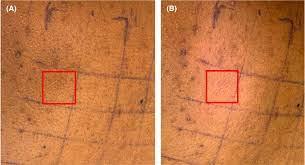Patch Testing
To determine the precise substance that causes contact dermatitis, an itchy rash that can appear on your skin in response to a substance to which you are allergic, patch testing is a common diagnostic technique. Poison ivy, jewelry, hair care items, cleaners, detergents, cosmetics, perfumes, and latex rubber are examples of common triggers.

The TRUE Test, which is a very effective screening tool but only evaluates 28 chemicals, is used by the majority of dermatologists. At Derma Skin Clinic, we provide expanded patch testing which includes up to 70 allergens known to cause skin rashes . Additionally, you can place a special order for any of the more than 200 allergens that we have access to if necessary.
Our doctor may categorize each spot on the results using a scale ranging from negative (signifying no reaction) to extreme reaction (signifying positive results for substance). Strong outcomes may result in skin ulcers or blisters that can be treated after the test is finished.
You can take action to avoid their triggers and stop contact dermatitis from happening after positive results have been identified. Your doctor will give you detailed instructions on how to avoid contact and your unique triggers.
Normally harmless substances that come into contact with the skin can trigger an immune response in allergic contact dermatitis. There are several common symptoms of contact dermatitis.
Redness.
Blisters.
Itching.
Rash.
Hives.
Burning.
These signs and symptoms can last up to four weeks, but they are typically manageable at home with medication and topical creams. The best defense against contact dermatitis is knowledge of the specific substances that set off reactions so that patients can steer clear of them as frequently as possible. Patch testing could be used to find the trigger. Needles or injections are not necessary.
The patch testing process is easy and painless. Your doctor will apply several patches to the skin on the back that contain various potential chemicals in an effort to pinpoint specific triggers. After that, the skin is exposed to these chemicals for 48 hours, during which time they must stay dry. Only sponge baths are advised for patients, and excessive perspiration is discouraged. The patch test is removed and a preliminary reading is taken to track any reactions after 48 hours. After an additional 24-48 hours, a new reading is obtained. Between these readings, patients may take a bath, but they shouldn't scrub their backs. Bathing can resume normally after the final test results have been read. Patients should stop using oral and topical corticosteroids in the area that will be tested before having a patch test, stay away from oral antihistamines, and keep the test area out of the sun for at least three weeks.